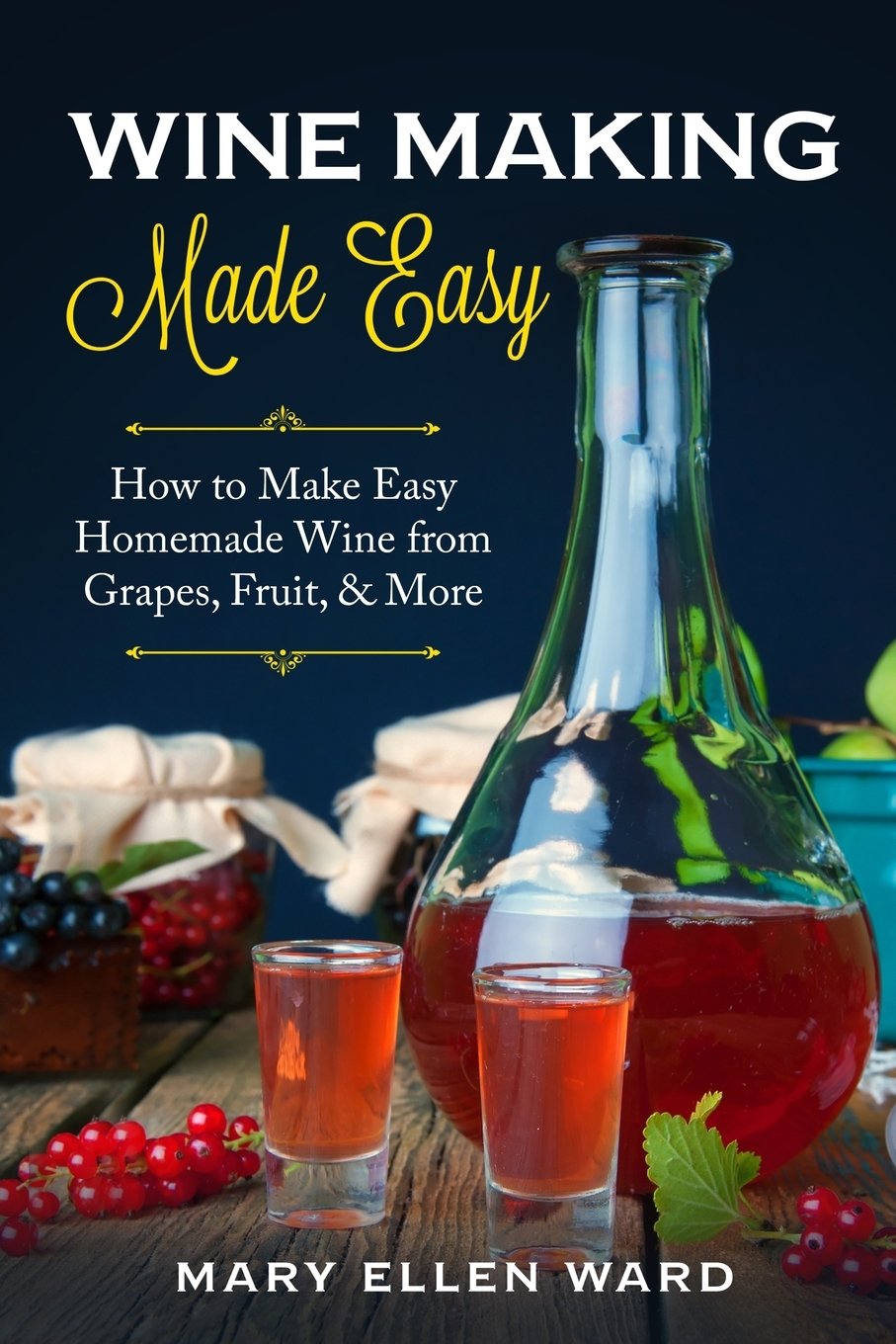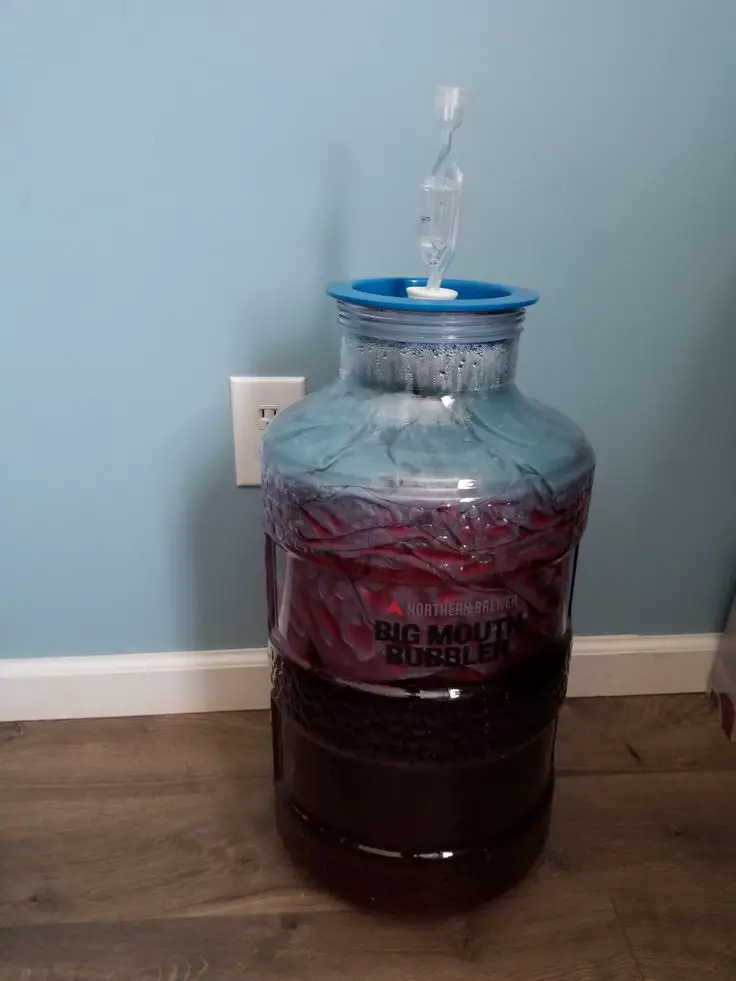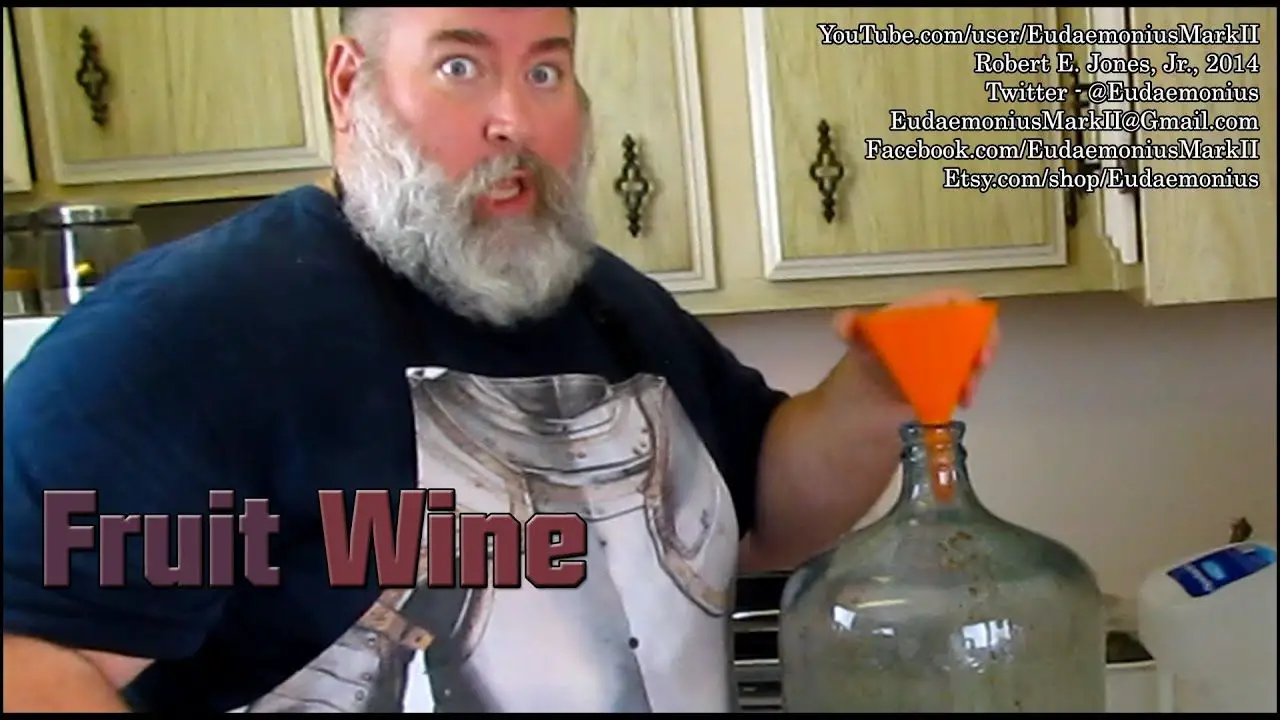Finish Up Your Homemade Fruit Country Wine
At this phase in making your country wine, it should be completely dry. Taste some of your delicious fruit wine and determine if you like it, or want it sweeter. If you want it sweeter, then follow the procedure I outlined in my how to backsweeten wine article. When you get it exactly how you want it, bottle your wine and age it for at least a few months.
I hope you have enjoyed reading my article on Country Wines! I plan on making a few of them this summer. I will be sure to post my videos and recipes as I make them, so check back and see how they come out!
Brandewijn: Your Next Favorite Drink
Brandy has a pretty rich history, although its a mystery where this aromatic and fruitful drink began. But what we know for a fact is that its delicious.
Its name has its roots in the word Brandewjin, which translates to burnt wine or brandy in English. But this amber concoction tastes nothing like burnt wine. Some brandies go through fractional distillation to get that yummy delicious flavor.
If at all, brandy tastes delightful! With its distinct alcoholic taste and sweet fruity undertones.
Ahhh, doesnt drinking brandy now sound like a good time? Especially if youve got different fruit flavors to choose from: peach brandy, apple brandy, and more.
You can pretty much use any fruit for your brandy, as long it has SUGAR CONTENT. Most of the commonly used fruits, for example, include our favorites apple, apricots, cherry, grapes, peach, pear, plum, and many more!
Can you already imagine all the wonderful flavors and undertones you need to try the next time you drink brandy? Now thats something you can look forward to.
Play The Waiting Game
The wine will sit in the container for 2 weeks. This allows the gases from the fruit to release in the container and begin turning the syrup into wine.
We use a large wine container to make our wine. Its 6½-gallons. I store it in my bedroom in a corner during the 2-week waiting process.
You should hear the airlock begin to bubble almost immediately after its added. Its a funny sound, but you get used to it over the 2-week waiting period.
Don’t Miss: Cutting Wine Bottles Into Glasses
Enjoy A Glass Of Home
Sit back, relax, and enjoy your fruits of labor. Nothing feels better than to drink your wine after a long hard day.
Hopefully, youll love our recipe as much as we did.
Let us know how it went!
Oh, and keep wine away from minors.
Lead marketer, brewer, dad, and husband. Pretty much an all-round awesome guy.
What Are You Waiting For Time To Make Some Brandy

Making wine is easy, but brandy? It sure sounds like a complicated and intimidating thing to do. But hey! If theres anything were sure we taught you in this article, its that making brandy is very easy!
As long as youve got all the materials and ingredients prepared, nothing should stop you. Who says you cant make finished brandy at home?
So what are you waiting for? Get your small glasses out, some ice, and pour yourself a drink made entirely by you. Whether its peach brandy, apple brandy, blackberry brandy, you name it!
We hope you enjoyed this article. If you have any questions, feel free to drop them down below. Well be more than happy to assist you in your pursuit to make one fine brandy.
Lead marketer, brewer, dad, and husband. Pretty much an all-round awesome guy.
Also Check: Wine That Goes With Salmon
Beginner’s Guide To Making Wine From Fruit And Flowers
Spring will soon be here. In winter we tend to make wine from wine kits, then from late Spring onwards there are lots of other fruit and flowers in season for winemaking.
You only have to consult a few old winemaking books or search the internet to realise just how many homemade wine recipes there are. And an awful lot of them are recipes for making wine from fruit and flowers. All the instructions will differ slightly, depending on the recipe. However the principles are generally the same.
The following general guide will give you an idea of what’s involved if you fancy making your own wine from scratch this year and have never done it before. Incidentally, if you’re likely to be making wine from garden grapes for the first time, check out our separate post on that.
A Carboy For Secondary Fermentation:
This is simply a big ole glass jug! We brew almost exclusively in one gallon batches at our house, so we have an entire fleet of one gallon carboys. You can purchase them in a bundle with an airlock and cork. They also come in much larger sizes if you want to do big batchesfive gallon is a common carboy size. The shape of the carboy is importantthe narrow neck reduces the surface area of wine exposed to oxygen during secondary fermentation, which is good!
Read Also: Lowest Calorie Sparkling Wine
Two Summer Wine Recipes
The best way to show that winemaking is easy is to provide a recipe. As it is now summer I have two for you: rose petal wine and strawberry wine. The first is unusual, but in a good way, and tastes of Turkish Delight.
The second is one of my very best and is unmistakably strawberry. Both recipes make six bottles. Two explanatory notes. My recipes use British measurements . And at each stage, you need to sterilize the equipment being used, with Sodium Metabisulphite. For instructions click here.
Homemade Grape Wine Recipe
You can make grape wines from a winemaking kit, which is the easiest way to make them. However, if you’d like to truly try your hand at a homemade wine from grapes, then you can follow this recipe. This recipe allows you to make one gallon of dry wine from fresh grapes. Use only freshly sanitized equipment.
Don’t Miss: Stella Rosa Green Apple Alcohol Content
What Kind Of Airlock Should I Buy
Youll see two different kinds of airlocks out therethe 3-piece airlock and the twin S-bubbler. Both work just fine for making wine. The only real advantage here is that its slightly easier to see bubbles moving on the S-bubbler. I have and use both kinds.
You will need a stopper or cap with a hole to affix the airlock to the top of your carboy or fermentation container, so make sure to grab that, too. They are often sold together in sets.
Why Dont You Use Campden Tablets
If you have dabbled in winemaking, you may have heard of a frequently used additive called Campden tablets. They are sodium or potassium metabisulfite tablets that are used to sterilize wine at various stages during the winemaking process. They kill off all the yeast and bacteria.
Why would you want to do this? Well, for some people, they want to have a completely sterile process to start off with . Some people also use them to stop fermentation before its complete if they want to achieve a certain level of sweetness. And some people also add them to the wine just before bottling to make certain fermentation is over to avoid making bottle bombs.
I personally do not use Campden tablets. Mostly because I just dont find that I need them in my winemaking process, but also because I enjoy including wild yeasts and bacteria in my creations. There are tons of resources on the internet about using Campden tablets if stertilization is of interest to you.
Also Check: How Many Ounces Are In A 750 Ml
Choose The Proper Container
When making wine from fruit juice, always start with a very clean jug or bucket. A gallon milk or water jug will work and so will a clean cheap plastic bucket.
Avoid containers that have held anything toxic. Were trying to make wine here, not poison. And especially, dont use anything that has held vinegar unless you want to make more vinegar.
Smell the container before you start. If it smells like soap, your wine will taste like soap. Sometimes rinsing the jug with a bit of baking soda and water can remove lingering food fragrances. Be sure to rinse again with clear water before you start making the wine.
To make sure all smells are gone, let it dry completely and smell the container again. When you cant smell anything, the container is good to make wine.
Try This Easy Apple Wine Recipe

Ingredients:
- 1 Campden tablet crushed
Follow these steps:
Sanitize all equipment thoroughly. Be sure to use only firm, ripe apples and check for worms or insects.
You will then be ready to bottle. The wine will be on the dry side. If you prefer a sweeter wine sweeten prior to bottling with a simple syrup or glycerin.
Shortcut to Homemade Fruit Wine
An even faster way to make fruit wine is to buy the kits at your local home brewing store. The fruit is already prepared in boxes or cans. All you need to do is measure, add yeast and mix. These cans are the size of paint cans so you know theres a lot of fruity goodness inside.
The fruit boxes from Winexpert come in flavors like pineapple pear, pomegranate, and kiwi pear. There are many other fruity combinations to choose from besides these. If you like sweet wines then give these kits a try. Buying the fruit like this saves you time in preparation and ensures the exact measurement of fruit for your homemade batch of wine.
When your wine is finished fermenting and is ready for bottling, create a wine label like this customer did for their Black Raspberry Merlot, by uploading a photo or clip art. Our wine labels are self-adhesive and waterproof. No need to worry if you spill any wine on them since they can handle moisture and are even impervious to cool temperatures. If the bottle of fruit wine is chilling on ice the label will stay put and look fantastic.
Read Also: Purchase Wine Grapes
How Do You Know When Its Finished Fermenting
Its finished fermenting when you tap the edge of the glass and no bubbles appear. However, this is not a hard and fast rule. Fermenting can stop or slow greatly due to fluctuations in temperatures.
A cold spell can slow fermenting, while a sudden warm-up can kick start it once more. This can lead to blowing corks in bottled wine, but you shouldnt have that problem if youre using the balloons or plastic wrap.
And there you have it, a cheap and easy way to make wine at home with very little money and no fancy equipment. Once youve tried making wine from fruit juice, then try your hand at making wine from fruit, flowers or even herbs. With a little imagination and experimentation, you can create your own wines to enjoy for years to come.
How Do You Sanitize All The Tools
Level of sanitization is one of those things that falls on a wide spectrum. Some folks prefer to absolutely blast their tools with synthetic chemical sanitizers before making wine to kill any yeast or bacteria that might impact the flavor of their wine. On the other end of the spectrum, some people dont even wash the spoon they use to stir so itll keep the same yeast on it from batch to batch!
Like most things in my life, I stick to the middle path. We make sure all of our tools are cleaned very well with soap and hot water. Plus we use an oxygen wash as an extra layer of sanitization before making our wine.
Don’t Miss: Carbs In Dry Wine
Nonstick Cookware Done The Right Way With Greenpan
Make sure your fruit has been in the freezer for at least three days before beginning the process. Bring your water to a boil and add the sugar. Take the fruit out of the freezer, place in a three gallon crock while you are waiting for the sugar water to boil. CAREFULLY pour the boiling sugar water over the frozen fruit in the crock. Avoid any contact with skin it will burn badly.
Stir the fruit and sugar water mixture and cover with a cloth and lid or large plate. Do not let any fruit flies into your wine, or it may turn into vinegar.
The next day, mash the berries with your hands, stir in your yeast thoroughly, and cover with a cloth and lid. Keep stirring the must in the crock once a day for a week, after which you will be ready to transfer it into the glass jugs.
Place a funnel in your jug, a fine mesh strainer on top of the funnel, and begin ladling the must into the jugs, separating the fruit pulp from the liquid. Leave at least four inches of headspace, and cap with an airlock, which allows oxygen out but nothing into the bottle. Place the bottles out of the direct sunlight where they will not be disturbed.
Related on Organic Authority
Racking And Secondary Fermentation
Once the primary fermentation has slowed down, its time to strain out the fruit and rack the wine into a carboy.
Read Also: Safari Malibu Wine Tasting
Basic Steps On Making Any Fruit Wine
BASIC STEPS ON MAKINGANY FRUIT WINE
1) First determine volume of wine youare making. This now determines size of containers and measurements foringredients used in making your wine.
2) It is recommended to use the bestpossible fruit you can obtain for making wine. Plan on using 3-4 pounds offruit per gallon of wine desired.
3) We recommend your primaryfermentation done a bucket because the large opening that will make it easierto clean, stirring while adding any ingredients, and removing fruit before theend of fermentation.
4) After your fermentation is complete,that is when you transfer your wine to the appropriate sized glass-containerfor clearing and aging.
5) Take your fresh fruit, clean andremove stems or pits, what is appropriate for the fruit you are working with.Place fruit in a nylon bag or cheese cloth to be crushed inside your bucket.You can use your hands, clean of course, to crush and/or smash to get the pulpbroken down. This is to get sugar available to your yeast plus release flavorsof the fruit.
6) Now add enough pectic enzymes toassist in breaking down all the sugars for your yeast. Follow the instructionon label to determine amount.
7) There is not enough sugar in yourfruit to make enough alcohol in your wine. You will need to add one to threepounds of sugar per gallon of wine desired. This will determine the alcohol strength ofyour wine. More is not always better. Using a hydrometer to measure sugar inyour wine must is helpful and is recommended.
Transfer To The Final Bottle
Once a good 6 months have passed, check on your country wine.
When there arent bubbles moving through the airlock or at the top of the wine, you can siphon the clear wine into the glass bottles, just in time for your anniversary or date night.
Hot Tip: Store the bottle longer for a richer taste that is if youre willing to wait.
Recommended Reading: Malibu Winery Safari Tour
How To Make Homemade Wine
wikiHow is a wiki, similar to Wikipedia, which means that many of our articles are co-written by multiple authors. To create this article, 39 people, some anonymous, worked to edit and improve it over time.wikiHow marks an article as reader-approved once it receives enough positive feedback. This article received 47 testimonials and 93% of readers who voted found it helpful, earning it our reader-approved status. This article has been viewed 1,924,482 times.Learn more…
If you’re a wine lover, you’ve probably dreamed of making your own wine right at home. Luckily, with the right tools and ingredients, you can! Once you get the hang of it, you can experiment with different fruits until you find the wine that’s perfect for you.
Can You Use Regular Yeast To Make Wine

Wine yeast can be hard to find unless you order it online or are lucky enough to be near a brewing supply store. Its worth the trouble to find it. It makes a much better tasting wine and it works better when making a higher alcohol content wine.
However, you can use regular bread yeast but it wont taste as good. Ive made juice wine with both and while the wine yeast version is far superior, the other is still drinkable. If youre merely experimenting with winemaking and just want to make something to give you a buzz, regular yeast will do it.
Read Also: Wine Ketosis
Make Homemade Fruit Wine
Want to master Microsoft Excel and take your work-from-home job prospects to the next level? Jump-start your career with our Premium A-to-Z Microsoft Excel Training Bundle from the new Gadget Hacks Shop and get lifetime access to more than 40 hours of Basic to Advanced instruction on functions, formula, tools, and more.
